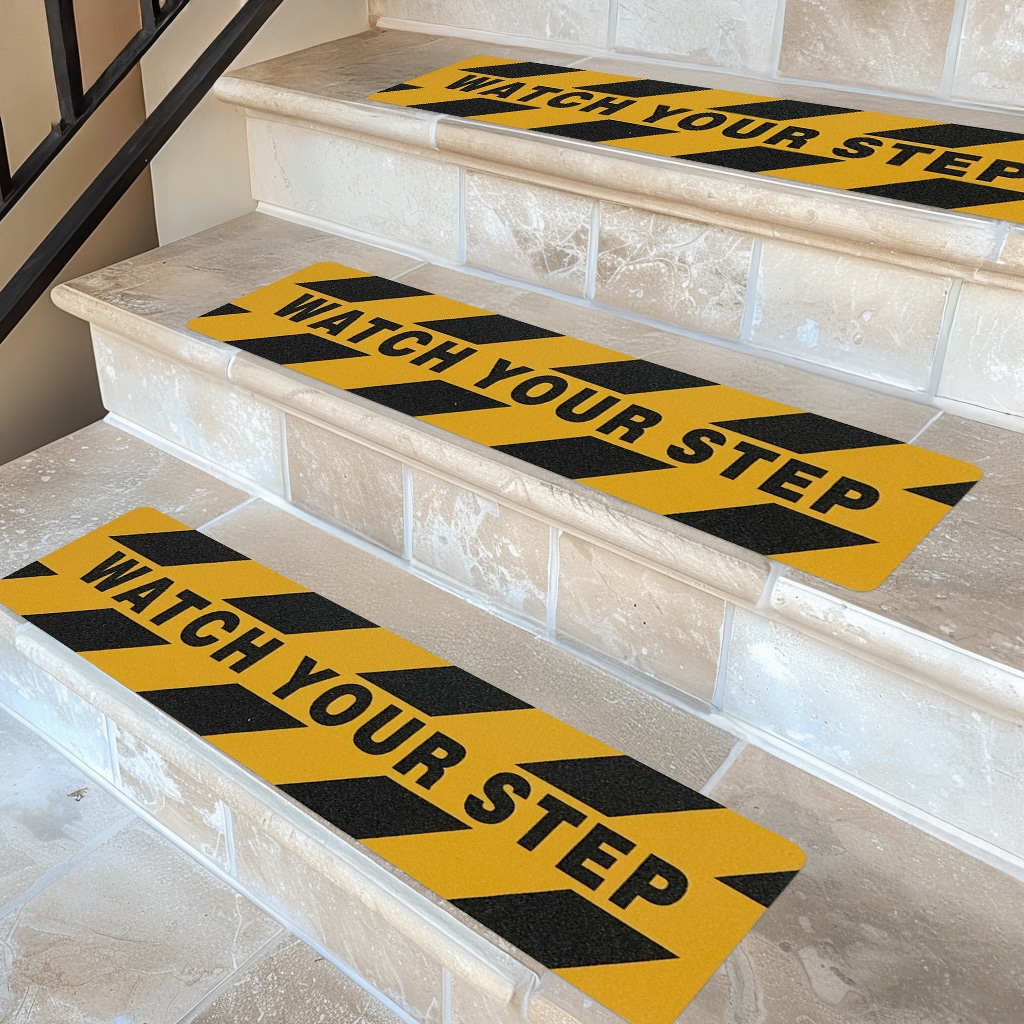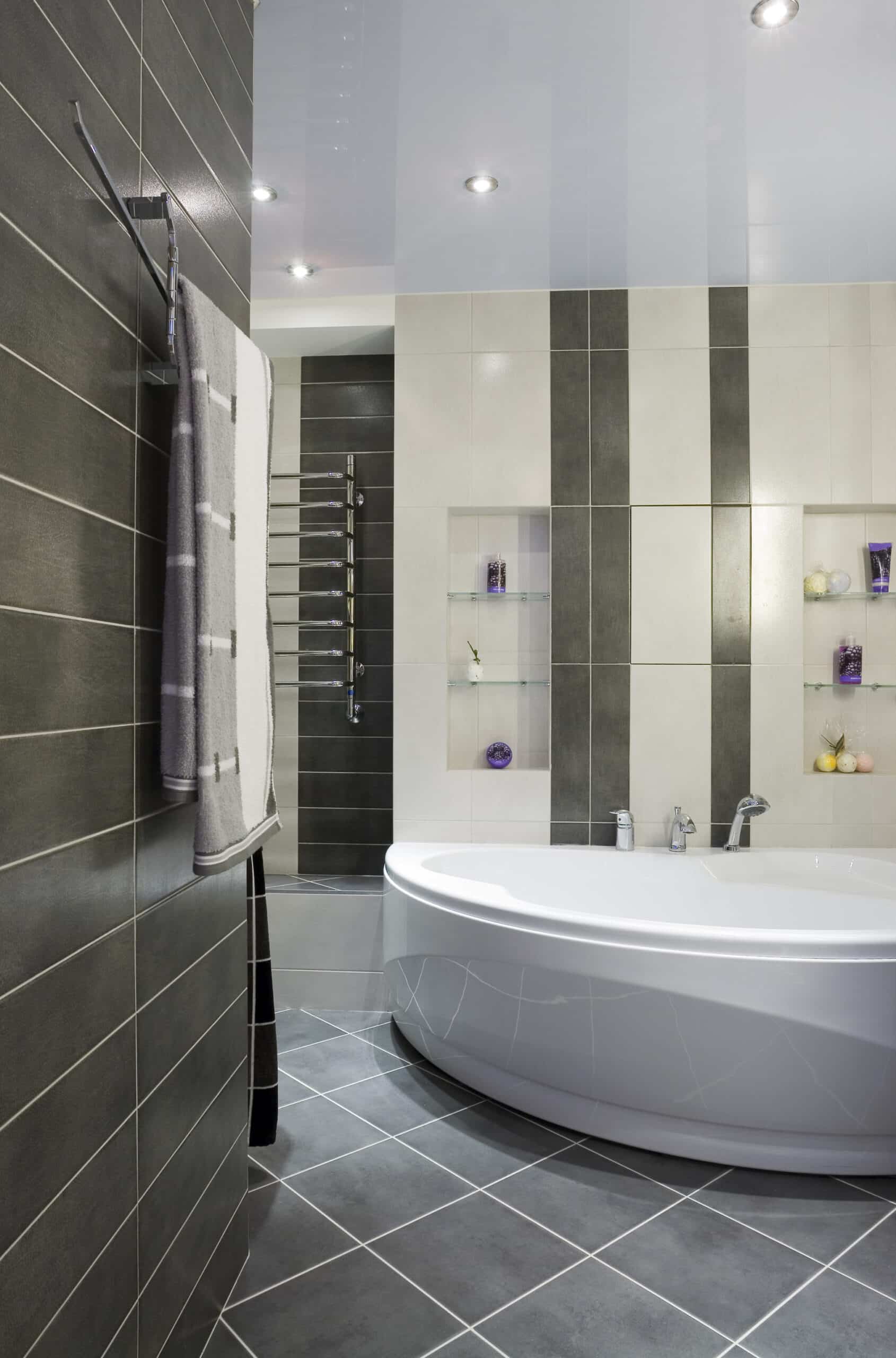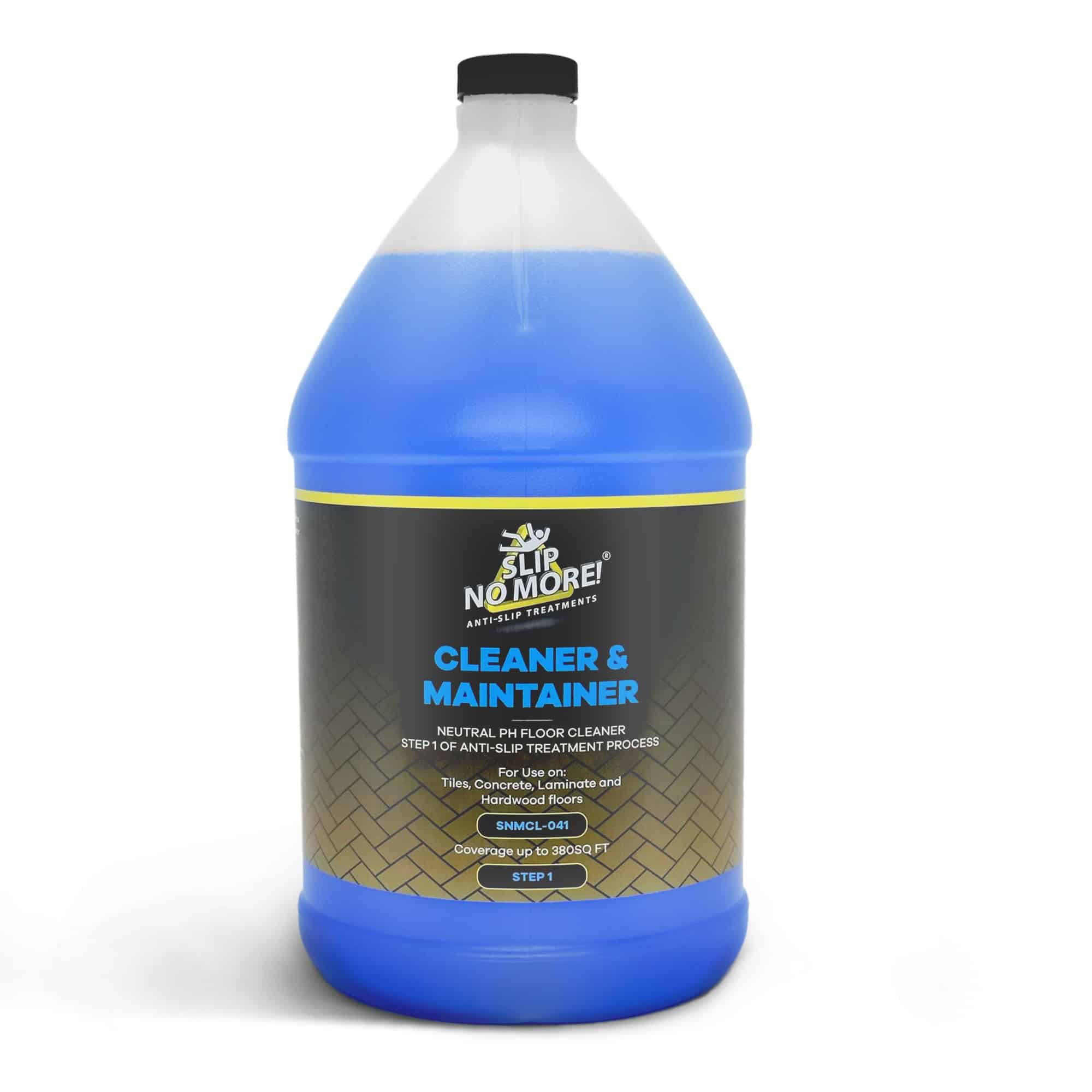The Ultimate Guide to Choosing Non-Slip Shower Floor Tiles for a Safe and Stylish Bathroom
In this guide, we will assist you in your search for the perfect non-slip shower floor tiles and help you make the right choice for your bathroom to keep it safe and stylish.
Safety should be your top priority regarding tiles in your shower. Accidents often occur due to slippery surfaces, especially in wet areas like the bathroom. Non-slip products for tiles provide excellent traction even when wet. They are an essential choice for your bathroom in terms of safety.
With a wide variety of designs and finishes available, non-slip tiles can enhance the overall aesthetic of your bathroom. From timeless and traditional to modern and sleek, there is a style to suit everyone’s taste. Safety doesn’t mean you have to compromise on style!
Throughout this guide, we’ll explore the wide variety and features of non-slip shower floor tiles and the factors to consider before selecting. This guide will assist you in creating a safe and stylish space you’ll love, whether you are renovating your bathroom or building a new one.
Let’s dive in and find the perfect non-slip shower floor tiles for your bathroom!
Importance of Anti-Slip Shower Floor Tiles
Slip and fall accidents are common in the bathroom. Anyone can get injured, especially the elderly and children. To prevent accidents and promote bathroom safety, installing non-slip shower floor tiles is crucial. These tiles should be specially designed to provide excellent traction even when exposed to soap and water.
Designed with various slip-resistance features, non-slip shower floor tiles have a textured surface that provides grip and prevents slipping, even when the tile is wet. Moreover, the grout lines between the tiles also prevent falls and slips, with additional traction provided.
Non-slip shower floor tiles are designed to withstand heavy foot traffic and resist wear and tear. Therefore, apart from safety, they offer longevity and durability. This makes non-slip shower floor tiles the practical choice for bathrooms, where frequent use and moisture can take a toll on flooring materials.
It’s imperative to consider the area’s specific needs when choosing non-slip shower floor tiles. Opting for tiles with a higher slip resistance is advisable if you plan to age in place or have mobility issues. Furthermore, potential buyers see non-slip shower floor tiles as a desirable feature, adding value to your home.
If non-slip shower floor tiles are out of your budget, you can use an anti-slip treatment or non-slip coating on your shower floor tiles. These types of products are easily available from online floor safety companies.
Factors to Consider When Choosing Non-Slip Shower Floor Tiles
To ensure that your specific needs and preferences are met, choosing the right non-slip shower floor tiles involves consideration of various factors. Below are some of the essential factors to keep in mind during the selection process:
- Slip Resistance Rating: Based on their slip resistance, the rating of non-slip shower floor tiles is usually indicated by a coefficient of friction (COF), which measures the tile’s ability to provide grip. They offer better traction and are less likely to cause slip-and-fall accidents. Look for tiles with a higher COF value. If you can’t find the tile you want, consider an anti-slip treatment for tiles from Slip No More.
- Material: Each has its own set of advantages and considerations. Non-slip shower floor tiles are available in a variety of materials. Porcelain, Ceramic, and Natural Stone are the most common. If you choose a slip-prevention product, be sure to ask for advice if you are unsure. Learn more about slip resistance HERE
- Size and Shape: The aesthetic and functionality of your shower floor can be impacted by the size and shape of the tiles. Larger tiles could offer less traction, but the fewer grout lines can create a seamless, modern look.
- Texture: Slip resistance relies strongly on the texture of the tiles. Glossy or polished finishes on tiles should be avoided, as they can be slippery. The only product for smooth tiles is an anti-slip treatment.
- Aesthetic Appeal: The overall look and feel you want to achieve in your bathroom must be considered.
You can narrow down your options and find non-slip shower floor tiles that meet your safety and style requirements by considering the above-mentioned factors.
Types of Non-Slip Shower Floor Tiles
Various types of non-slip shower floor tiles are available, each with unique features and benefits. To make an informed decision and to choose the most appropriate option of non-slip shower floor tiles for your bathroom, understanding the different types can assist. The main types of non-slip shower floor tiles are stated below:
- Ceramic Tiles: Ceramic tiles are a popular choice due to their affordability and versatility. Your chosen design aesthetic can be easily achieved with various colors, patterns, and textures. Excellent slip resistance and easy to clean, ceramic tiles with a textured finish are the go-to.
- Porcelain Tiles: Known for their durability, strength, and water resistance, porcelain tiles are a popular choice for non-slip shower floor tiles due to their ability to withstand moisture and high foot traffic. Available in various finishes, including textured options that provide excellent slip resistance.
- Natural Stone: Granite, slate, and marble. Natural stone tiles add a touch of elegance and luxury to any bathroom. Offering unique natural textures and patterns and creating a visually stunning floor. Natural stone tiles often require more maintenance and are often more expensive than other tile options. In most cases, you will still need a non-slip product on these tiles.
- Mosaic Tiles: When creating intricate patterns and designs on shower floors, mosaic tiles are a popular choice. Mosaic tiles offer good slip resistance due to the increased number of grout lines and come in small, individual pieces that can be used to create visually appealing patterns. They may, however, require more maintenance and can be time-consuming to install.
The specific benefits and considerations of each non-slip shower floor tile type should be considered to determine your needs best.
Popular Materials for Non-Slip Shower Floor Tiles
The safety and style of your bathroom are greatly influenced by the choice of material for your non-slip shower floor tiles. The popular materials used for non-slip shower floor tiles, along with their unique characteristics, are listed below:
- Ceramic: Due to its affordability, durability, and versatility, ceramic is widely used for non-slip shower floor tiles. They are made from clay and other natural materials fired at high temperatures to create a hard & water-resistant surface. Ceramic tiles are suitable for different design styles due to their availability in various patterns, colors, and textures. Regular sweeping and mopping are usually sufficient to keep ceramic tiles in good condition.
- Porcelain: Another popular choice for non-slip shower floor tiles is textured porcelain tiles made from clay and other materials. These tiles are fired at higher temperatures than ceramic tiles. Porcelain tiles are denser, harder, and more water-resistant due to the higher firing temperature. Available in various finishes, including textured options that provide enhanced grip. Porcelain tiles offer excellent durability that can withstand heavy foot traffic.
- Natural Stone: Granite, marble, and slate, all-natural stone tiles, are formed by nature, offering unique patterns, textures, and colors, adding a touch of luxury and elegance to any bathroom. A visually stunning shower floor that is the bathroom’s focal point can be created using natural stone tiles. Natural stone tiles do, however, require more maintenance than ceramic and porcelain tiles as they are porous and can absorb water and stains if not sealed correctly.
Each material’s specific characteristics and maintenance requirements should be considered for your non-slip shower floor tiles to align with your preferences and lifestyle. Creating a bathroom that reflects your style and the options for non-slip shower floor tiles is something we can help you with.
Design Options for An Anti-Skid Shower
A wide range of design options for non-slip shower floor tiles are available, allowing you to create a bathroom that suits your style and complements your overall décor. Below are some popular design options to consider:
- Solid Colors: Timeless and versatile, solid-colored tiles can create a sleek and modern look or provide a neutral backdrop for other design elements in your bathroom and are available in various shades, allowing you to match them with your preferred color scheme.
- Patterns and Textures: Patterned and textured non-slip shower floor tiles can add visual interest and depth to your bathroom. There are many options, be it geometric patterns or natural stone textures. These tiles can create a focal point in the shower area and enhance the overall aesthetic of the space.
- Mosaic Designs: A popular choice for creating intricate patterns and designs on shower floors is mosaic tiles. Mosaic tiles offer endless design possibilities and come in small, individual pieces that can be arranged to create visually appealing patterns, allowing you to create a unique and personalized shower floor.
- Custom Designs: Many manufacturers offer custom design options for non-slip shower floor tiles, allowing you to create a truly unique shower floor that reflects your style and preferences.
The visual impact you want to create and the overall aesthetic of your bathroom should be considered when choosing the design of your non-slip shower floor tiles. To keep your non-slip shower floor tiles in optimal condition, we’ll discuss maintenance and cleaning in the next section.
Maintenance and Cleaning of your Non-Slip Shower Floor Tiles
Proper cleaning and maintenance are essential to keep your non-slip shower floor tiles in optimal condition and maintain their slip resistance. To effectively assist you in cleaning and maintaining your tiles, here are some tips:
- Regular Cleaning: To remove loose debris and prevent scratches, sweep or vacuum your shower floor. Avoid harsh chemicals or abrasive cleaners, which can damage the tile’s surface and reduce its slip resistance. Only use a mild, non-abrasive cleaner and a soft brush or sponge to clean the tiles. We have a neutral PH cleaner & maintainer developed for this purpose.
- Grout Cleaning: Dirt, grime, and soap scum can accumulate over time in the grout lines between the tiles. Using a grout cleaner and a small brush, regularly clean the grout lines, scrubbing gently to avoid damaging them. Staining can be prevented by sealing the grout lines making for easier cleaning.
- Preventive Measures: Wiping down your shower floor after each use will minimize the buildup of soap scum and mineral deposits and help prevent the tiles from becoming slippery due to residue. Using a squeegee or towel to remove excess water can prevent water sports and maintain the tile’s appearance.
- Stain Removal: Use baking soda and water to create a paste if your non-slip shower floor tiles develop stubborn stains. Apply the paste to the stained area, and let it sit for a few minutes before scrubbing gently and ending by rinsing thoroughly with clean water to remove the paste.
Rest assured, your non-slip shower floor tiles remain in excellent condition. They will provide safety and appearance by following the points mentioned above.
To help you prepare for the installation or renovation of your bathroom, we’ll discuss the installation process for non-slip shower floor tiles in the next section.
Installation Process for Non-Slip Showers
Careful planning and proper execution when installing Non-Slip Shower Floor Tiles. are imperative in ensuring a safe and long-lasting result. Hiring a professional is highly recommended for installation. Understanding the process can assist you in making informed decisions and to communicate effectively with the installer. Below is the general step involved in the installation process:
- Prepare the Surface: Ensure the shower floor is clean, dry, and free from any debris. Remove any old tiles or flooring materials, and repair any cracks or uneven surfaces.
- Choose the Right Adhesive: Using the right adhesive is crucial for Non-Slip Shower Floor Tiles. Adhesive specifically designed for wet areas or tiles with a high slip resistance rating must be used. Follow the manufacturer’s guidelines for application and drying time.
- Lay out the Tiles: Lay out the tiles on the surface floor to determine the best placement and to ensure a proper fit before applying adhesive. Make the necessary cuts or adjustments to ensure a seamless installation.
- Apply the Adhesive: With a notched trowel, apply the adhesive to the shower floor in small sections. Work in small areas to prevent the adhesive from drying out before you can lay the tiles.
- Install the Tiles: Place each tile onto the adhesive carefully, pressing down firmly to ensure good adhesion. For constant spacing between the tiles, use tile spacers. Continue this process until all tiles are installed.
Allow sufficient time for the adhesive, grout, and sealer to dry before the shower. A durable and long-lasting non-slip shower floor is ensured by following the installation steps above.
Cost Considerations for Non-Slip Shower Floor Tiles
Cost is an important factor to consider when installing non-slip shower floor tiles. Here are some cost considerations to consider:
- Tile Material: The type of material can significantly impact the cost of the tiles. Ceramic and porcelain tiles are generally the more affordable options, whereas natural stones like marble or travertine can be more expensive.
- Tile Size: Smaller tiles are less expensive than larger ones as they require less material. Choose tiles that fit within your budget by taking into consideration the size of your shower floor.
- Tile Quality: Higher-quality tiles offer better durability and longevity but often have a higher price tag. In the long run, the investment in quality tiles can save you money by reducing the need for frequent replacements.
- Installation Costs: The cost of professional installation must be factored into your budget if you’re not confident in your DIY skills. Hiring a professional ensures a proper and long-lasting installation. It will add to the overall cost over time. Always compare the cost of replacing slippery tiles vs applying an anti-slip treatment.
- Cleaning and Maintenance: Consider the long-term costs of cleaning and maintaining your non-slip shower floor tiles. Special cleaning products or regular resealing may be required for some materials, leading to a higher cost overall.
Establish a budget by considering the above factors to find non-slip shower floor tiles that offer both safety and affordability. Chat with us if you need advice.
Conclusion
Non-slip shower floor tiles offer the best worlds – SAFETY and STYLE! Investing in non-slip shower floor tiles is a step that makes a significant difference in preventing slips and falls. Don’t compromise!
We have a host of valuable information on our Instagram and Facebook channels. If you need instructional videos on how to apply our products, please view our YouTube channel.





